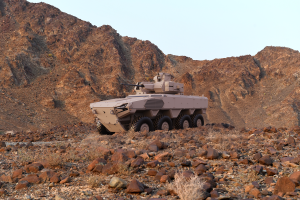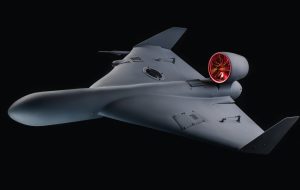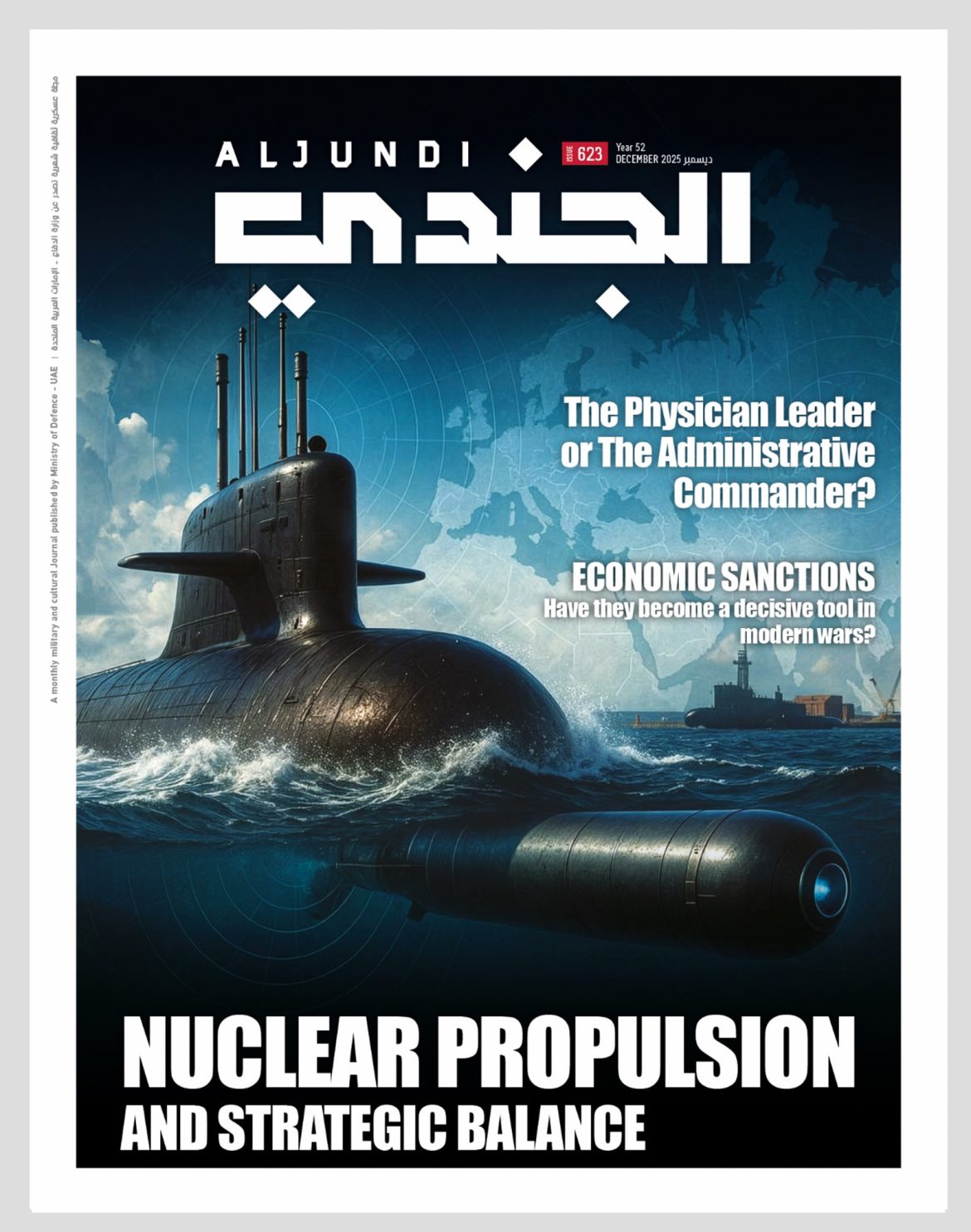As military doctrines evolved during the late Cold War and threats became increasingly complex, the limitations of conventional bombers became evident. Advances in radar systems and long-rang air defence missiles turned hostile airspace into densely defended zones, making deep penetration missions far riskier and costlier.
Against this backdrop, the United States responded with an extraordinary engineering concept: a revolutionary stealth platform that transcended traditional military aviation norms — the B-2 Spirit. More than just a new aircraft, the B‑2 embodied a radical rethinking of strategic airpower: dominance achieved not through brute force, but through near-invisible precision.
Engineering a New Era of Deterrence
The B‑2 Spirit emerged from a clear operational necessity: to create an aircraft that could silently breach the world’s most sophisticated air defences, deliver devastating payloads deep inside enemy territory, and return undetected. It was not only a product of advanced physics and materials science but also a bold fusion of military doctrine and computer‑driven design.
Through its advanced stealth technologies, composite materials engineered to absorb radar waves, and a sleek, tailless flying wing design, the B‑2 Spirit shifted the paradigm from “attack by force” to “attack by radar silence.”
Military strategists recognised from the outset that this aircraft would be more than a striking tool; it would serve as a symbol of deterrence and a political statement, showcasing American leadership in defence innovation. For this reason, the B‑2 has consistently been among the first assets deployed during major strategic crises, forming a critical leg of the United States’ nuclear triad alongside intercontinental ballistic missiles and nuclear‑armed submarines.
More than thirty years since its debut, the B‑2 Spirit remains the spearhead of America’s long‑range airpower and an enduring icon of modern military aviation. Far beyond being a highly sophisticated tactical weapon, it sends a silent message to potential adversaries: that deterrence is not measured by noise, but by the power to strike from the shadows without warning.
A Silent Engineering Revolution

In the 1970s, against the backdrop of intense competition between the United States and the Soviet Union in the technological and military domains, American defence planners realised that the next generation of enemy air defences — including long‑range SAM systems and multi‑band radar networks — could leave traditional strategic bombers like the B‑52 and B‑1 increasingly vulnerable and less effective in deep‑strike missions.
From this challenge emerged the vision for a new kind of strategic bomber: an aircraft built not for speed or altitude, but for stealth — capable of evading detection from the moment it crossed into hostile airspace until the moment it delivered its strike. This vision became the Advanced Technology Bomber (ATB) programme: an exceptionally secretive, heavily funded initiative that would later be hailed as a “silent revolution” in military aviation engineering.
In 1981, the Pentagon awarded the main development contract to Northrop (later Northrop Grumman), known for its early expertise in flying wing designs, with Boeing as a principal partner for production and systems integration. The project combined unconventional aerodynamic principles with then‑emerging computer‑aided design and simulation tools to produce a shape that could dramatically reduce radar visibility without sacrificing range or payload capacity.
After more than a decade of design work, wind‑tunnel testing and advanced simulations, the first B‑2 prototype was publicly unveiled in November 1988 at Palmdale Air Force Base in California. The aircraft’s futuristic, tailless flying wing configuration — without vertical stabilisers or traditional control surfaces — captivated global attention, marking a turning point in the history of military aviation.
The B‑2 Spirit officially entered operational service in January 1997 with the 509th Bomb Wing at Whiteman Air Force Base, Missouri. While original plans called for the production of 132 bombers, the programme’s high cost — around $2.2 billion per aircraft including development — led Congress to limit procurement to just 21. One aircraft was later lost in a 2008 crash in Guam, leaving 20 operational today.
Despite this small fleet size, the B‑2 has proved itself over the past three decades to be an invaluable strategic asset — maintaining the unique ability to carry out precise, deep‑penetration strikes in highly contested environments, all while remaining effectively invisible to enemy defences.
A Design Defined by Stealth
At the heart of the B‑2’s capability lies its highly integrated stealth technology. Its broad, seamless flying wing shape, free of vertical stabilisers, drastically reduces radar signature. Advanced composite materials and radar‑absorbent coatings further minimise reflections, while carefully engineered engine exhausts lower heat emissions, reducing detectability by infrared sensors.
The result: an estimated radar cross‑section of just 0.0001 square metres — comparable to a metallic marble. This extraordinary achievement means the B‑2 can slip through even densely monitored airspace virtually unnoticed.
The aircraft measures 21 metres in length with a wingspan of 52.12 metres and a maximum take‑off weight exceeding 152,000 kilograms. Powered by four General Electric F118‑GE‑100 engines housed within the wing structure to reduce heat and noise, the B‑2 can cruise at around 1,010 km/h and operate over 11,000 kilometres without refuelling — with aerial refuelling extending its range indefinitely.
Highly automated flight controls, including a quadruple fly‑by‑wire system, allow the B‑2’s two‑person crew to manage complex missions, supported by encrypted GPS‑aided inertial navigation.
Precision Armament and Combat Flexibility

Internally, the B‑2 carries more than 18,000 kilograms of mixed ordnance within two weapon bays, preserving stealth during missions. Its arsenal ranges from B61 and B83 nuclear bombs to precision-guided JDAMs, JASSM cruise missiles, and the formidable GBU‑57A/B Massive Ordnance Penetrator designed to defeat deeply buried targets.
This broad range enables the B‑2 to strike critical infrastructure, hardened bunkers, air defence networks and command centres alike, reinforcing its role as a tool of strategic deterrence and flexible power projection.
Operational Legacy and Modern Deployments
Since its first combat in Kosovo in 1999, the B‑2 has featured prominently in US military campaigns, including operations in Afghanistan (2001), Iraq (2003), and Libya (2011). Its stealth and range have allowed it to lead initial strike waves, neutralising high-value targets with precision.
Most recently, in June 2025, the B‑2 played a pivotal role in Operation Midnight Hammer — a 37‑hour mission from the continental US, striking fortified nuclear facilities in Iran. The operation once again demonstrated the bomber’s unmatched ability to deliver strategic strikes deep in defended airspace without detection.
Sustaining Strategic Superiority
Now in service for over 30 years, the B‑2 Spirit remains at the forefront of US long‑range strike capabilities thanks to continual upgrades. Enhancements include advanced radar systems, modernised satellite communications, upgraded stealth coatings, and the integration of artificial intelligence to boost situational awareness and decision speed.
Beyond its tactical versatility, the B-2 serves as a powerful symbol of deterrence, reminding potential adversaries that the greatest threat may come silently, without warning.
As the US Air Force prepares to introduce the next-generation B‑21 Raider, the B-2 Spirit stands as a testament to revolutionary design and enduring strategic value — a rare blend of engineering innovation and operational impact that has shaped modern airpower for decades.
Infographic
B‑2 Spirit
| Primary Role | Multi-role strategic stealth bomber |
| Length | 20.9 metres |
| Height | 5.1 metres |
| Wingspan | 52.12 metres |
| Empty Weight | 72,575 kg |
| Maximum Take‑off Weight | 152,634 kg |
| Fuel Capacity | 75,750 kg |
| Service Ceiling | 15,240 metres |
| Top Speed | High subsonic (below the speed of sound) |
| Operational Range | Intercontinental |
| Crew | Two pilots |
Payload & Armament
Internal payload capacity: up to 18,144 kg
Capable of carrying:
Precision-guided conventional munitions (JDAM, JASSM, MOP)
Nuclear weapons (B61 and B83 bombs)














